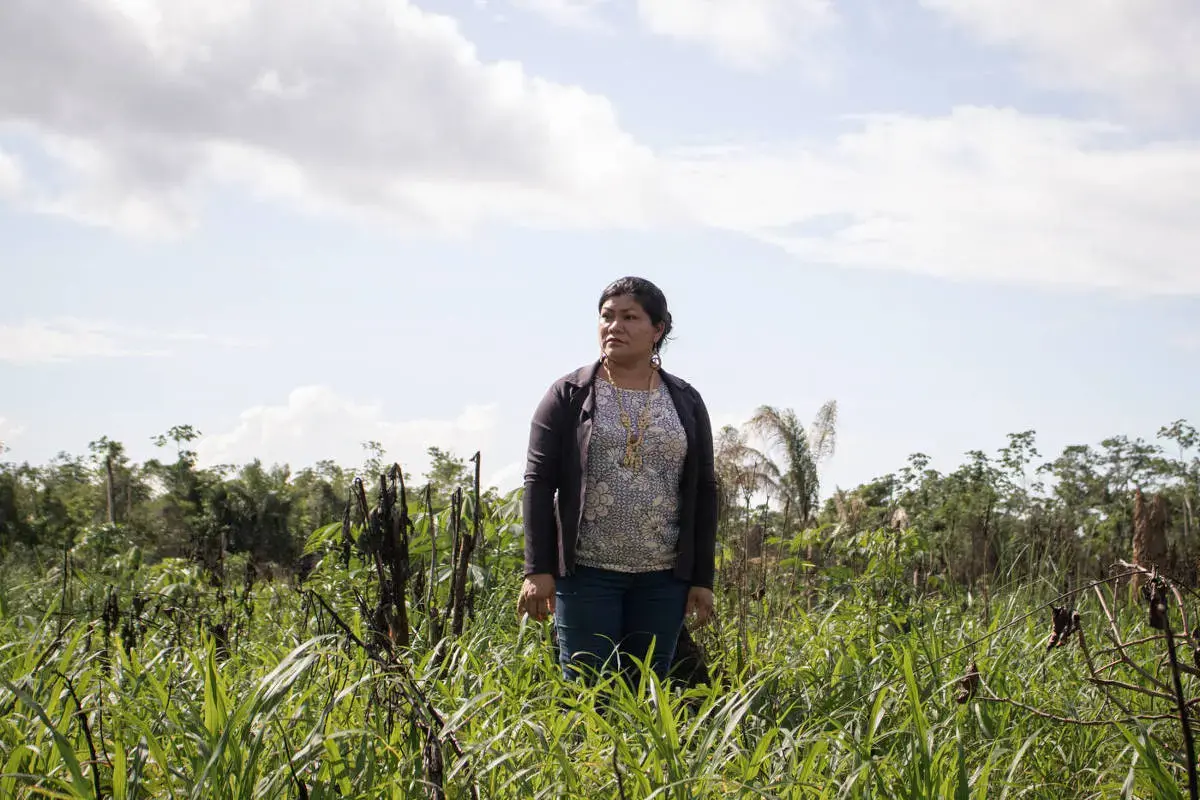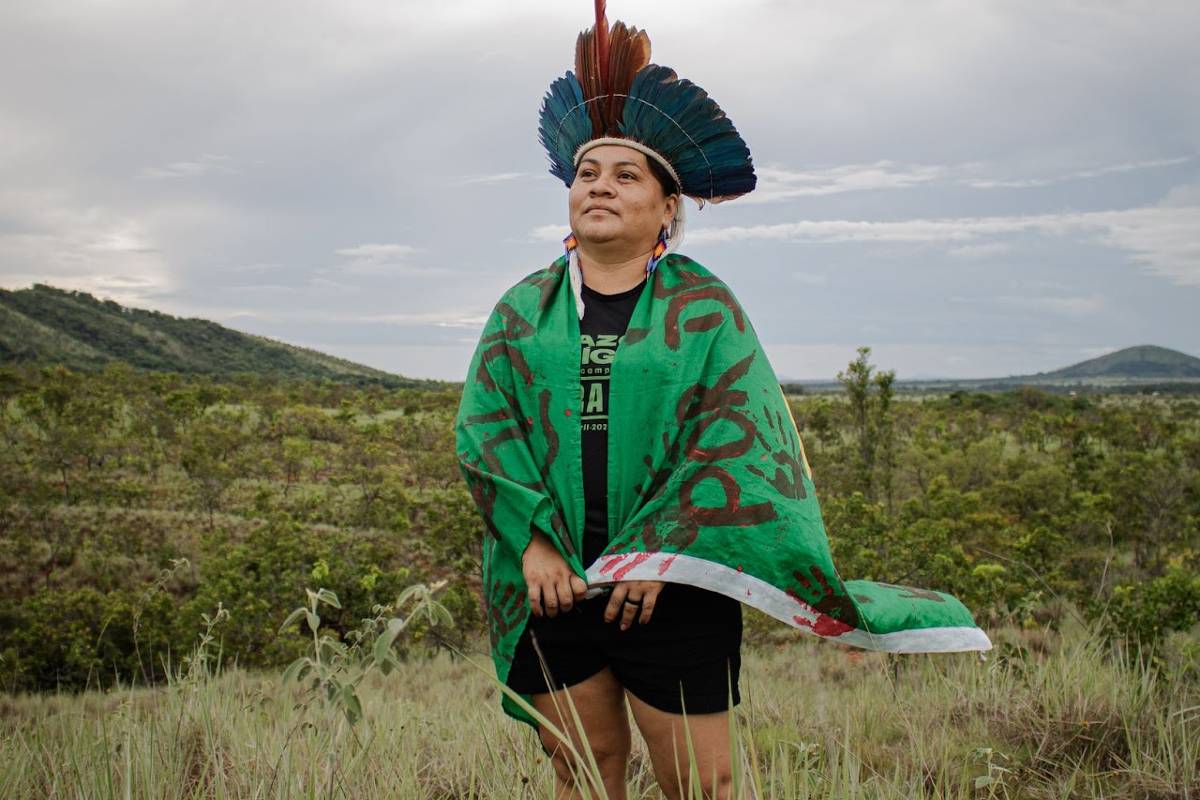This story excerpt was translated from Portuguese. To read the original story in full, visit Folha de S.Paulo. You may also view the original story on the Rainforest Journalism Fund website. Our website is available in English, Spanish, bahasa Indonesia, French, and Portuguese.
Communities lead initiatives to become self-sufficient
In the freshly mowed fields of the Novo Paraíso Indigenous community in Roraima, the brown of the bare earth, where maniocs are beginning to sprout, contrasts with the green of the surrounding forest.
"All of us in the community are farmers," says Maria Loreta Inácio Pascoal, of the Wapichana people, the tuxaua (cacica) of Novo Paraíso. "This is where we get our livelihood," she says as she walks through the plantations.
Novo Paraíso was the last of the seven communities to be created within the Manoá-Pium Indigenous Land in Roraima. Homologated in 1982, the TI has an area of almost 43,500 hectares and is part of the nine Indigenous territories of Serra da Lua, a region characterized by demarcation in "islands"—in small areas, surrounded by monoculture crops.







